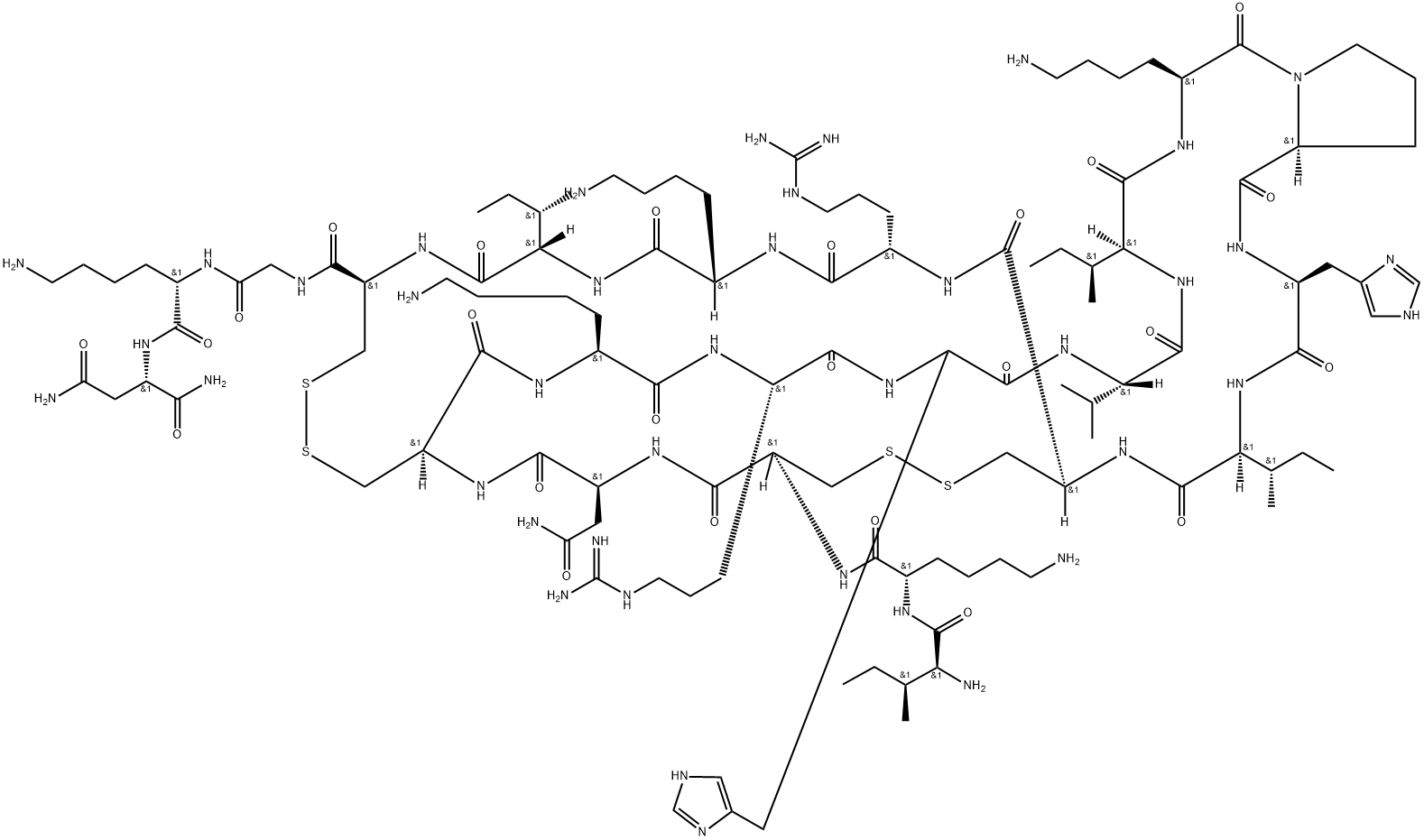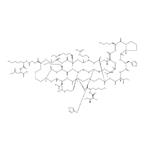
MAST CELL DEGRANULATING PEPTIDE
- Product NameMAST CELL DEGRANULATING PEPTIDE
- CAS32908-73-9
- CBNumberCB4493264
- MFC110H192N40O24S4
- MW2587.24
- EINECS628-471-3
- MDL NumberMFCD00167557
- MOL File32908-73-9.mol
Chemical Properties
| Density | 1.50±0.1 g/cm3(Predicted) |
| storage temp. | −20°C |
| solubility | Soluble in DMSO |
| form | Solid |
| color | White to off-white |
MAST CELL DEGRANULATING PEPTIDE Price
| Product number | Packaging | Price | Product description | Buy |
|---|---|---|---|---|
| ChemScene CS-7079 | 500ug | $336 | Peptide401 98.29% |
Buy |
| Biorbyt Ltd orb99641 | 0.5mg | $408 | Mast Cell Degranulating peptide Greater than 98 % purified |
Buy |
| ChemScene CS-7079 | 1mg | $576 | Peptide401 98.29% |
Buy |
| Biorbyt Ltd orb99642 | 1mg | $595 | Mast Cell Degranulating peptide Greater than 98 % purified |
Buy |
| American Custom Chemicals Corporation PEP0002440 | 0.5MG | $726.73 | MAST CELL DEGRANULATING PEPTIDE 95.00% |
Buy |
MAST CELL DEGRANULATING PEPTIDE Chemical Properties,Usage,Production
Biological Activity
Peptide 401 is a potent mast cell degranulation peptide derived from bee venom that inhibits vascular permeability.in vivo
Peptide 401 substantially inhibits the oedema provoked by subplantar injection of carrageenin or intra-articular injection of turpentine in the rat. The ED 50 of 401 is c. 0.1 mg/kg. The anti-inflammatory effect is assessed by measurement of the increased 125 I-albumin content of an injected site in comparison with an uninjected contralateral site. Peptide 401 also suppresses the increased vascular permeability due to intradermal injection of various smooth muscle spasmogens (histamine, bradykinin, 5-hydroxytryptamine (5-HT), and prostaglandins). Peptide 401 (MCD peptide) contains 22 residues and occurs in the venom of the common European honey bee to the extent of about 2% by weight . It has powerful anti-inflammatory activity (at doses as low as 0.1 mg/kg) in a variety of animal models, ie, hind paw oedema in the rat induced by carrageenin or turpentine, adjuvant arthritis in the rat, and increased skin permeability in the rat resulting from subcut aneous injection of bradykinin, prostaglandin E1 kallikrein, histamine and 5-hydroxytryptamine (5-HT). It has a powerful degranulating effect on mast cells and involves the release of histamine and other pharmacologically active agents.
target

